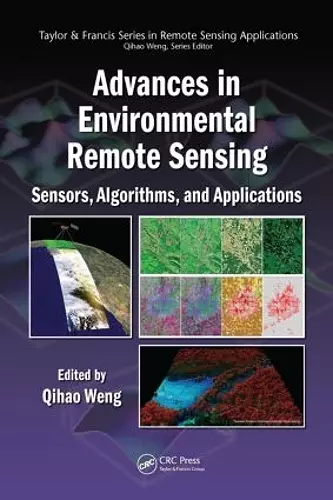Advances in Environmental Remote Sensing
Sensors, Algorithms, and Applications
Format:Hardback
Publisher:Taylor & Francis Inc
Published:16th Feb '11
Currently unavailable, and unfortunately no date known when it will be back
This hardback is available in another edition too:
- Paperback£84.99(9781138072916)

Generating a satisfactory classification image from remote sensing data is not a straightforward task. Many factors contribute to this difficulty including the characteristics of a study area, availability of suitable remote sensing data, ancillary and ground reference data, proper use of variables and classification algorithms, and the analyst’s experience. An authoritative text, Advances in Environmental Remote Sensing: Sensors, Algorithms, and Applications compiles comprehensive review articles to examine the developments in concepts, methods, techniques, and applications as well as focused articles and case studies on the latest on a particular topic.
Divided into four sections, the first deals with various sensors, systems, or sensing operations using different regions of wavelengths. Drawing on the data and lessons learned from the U.S. Landsat remote sensing programs, it reviews key concepts, methods, and practical uses of particular sensors/sensing systems. Section II presents new developments in algorithms and techniques, specifically in image preprocessing, thematic information extraction, and digital change detection. It gives correction algorithms for hyperspectral, thermal, and multispectral sensors, discusses the combined method for performing topographic and atmospheric corrections, and provides examples of correcting non-standard atmospheric conditions, including haze, cirrus, and cloud shadow.
Section III focuses on remote sensing of vegetation and related features of the Earth’s surface. It reviews advancements in the remote sensing of ecosystem structure, process, and function, and notes important trade-offs and compromises in characterizing ecosystems from space related to spatial, spectral, and temporal resolutions of the imaging sensors. It discusses the mismatch between leaf-level and species-level ecological variables and satellite spatial resolutions and the resulting difficulties in validating satellite-derived products.
Finally, Section IV examines developments in the remote sensing of air, water, and other terrestrial features, reviews MODIS algorithms for aerosol retrieval at both global and local scales, and demonstrates the retrieval of aerosol optical thickness (AOT). This section rounds out coverage with a look at remote sensing approaches to measure the urban environment and examines the most important concepts and recent research.
The form of the book (comprehensive reviews accompanied by application presentations), and the extent of its contents (wide range of sensors, platforms, wavelengths, methods, and applications areas), and the illustrative nature of case studies, provides an excellent supplementary text for both undergraduate students and a concise reference for scientists and engineers. Hearty congratualtions to all prominent contributors and the editor!
— PE&RS, Photogrammatic Engineering & Remote Sensing
ISBN: 9781420091755
Dimensions: unknown
Weight: 1292g
610 pages